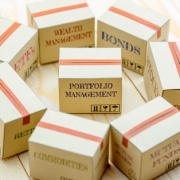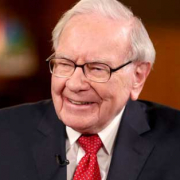After all of the hype and excitement surrounding GameStop, silver and Ripple in the last few days I thought it would be interesting to discuss the differences between investing and gambling.
I am going to try to break it down into a few key areas of difference:
-
- Time. Investing tends to be for the long term because that is how long it takes to get the desired outcome. Look at a chart of the S&P 500 over 90(+) years and you can see that there have been sustained lows as well as highs but that, in time, returns have been positive. Gambling tends to be looking for quick wins ie a casino or a horse race don’t last long yet returns can be high. It is possible to make very big returns in a short time by buying a stock, however, equally, it is possible to make large losses too.

Timeline of the S&P 500 Over 90+ Years
- Knowledge. The GameStop frenzy saw some people make a lot of money and, at the beginning, was portrayed as novices who had struck gold. In fact, some of the people making big returns there were not novices at all and knew exactly what they were doing. They went into the trade with knowledge of the system, knowledge of the market, knowledge of the reality behind a short and knowledge of when to pull out.
- Having a System. If you are buying stocks because you heard it was beneficial and all your friends do it then the chances are you don’t have a system. Investors tend to have a system that they use in order to achieve great results over time. For most investors this is using a system called ‘dollar cost averaging’ whereby money is dripped into the market at regular intervals – if you consider pension funds which most people contribute to on a monthly basis this would be a good example. Dollar cost averaging mathematically smoothes volatility over time by ensuring that you buy the average price of the market over the years.
- Emotion. Investing over time is likely to be deemed rather boring by most. Buying a well diversified basket of stocks either directly, through an ETF or through a fund or a mix of all with the intention of holding it for 30 years or more is not exactly thrilling. I try to make it more interesting for clients by dotting more interesting holdings around the edges however, in reality, it is what it is. Gambling, however, can give fantastic highs and lows. If you are chasing these emotional whirlwinds through the stock market then it is likely that you have used it as a tool to gamble – particularly if your view is short term, you have no system and your knowledge level is poor!
- Time. Investing tends to be for the long term because that is how long it takes to get the desired outcome. Look at a chart of the S&P 500 over 90(+) years and you can see that there have been sustained lows as well as highs but that, in time, returns have been positive. Gambling tends to be looking for quick wins ie a casino or a horse race don’t last long yet returns can be high. It is possible to make very big returns in a short time by buying a stock, however, equally, it is possible to make large losses too.
The below article appeared in The Financial Times last year following the rise of the markets from March to September and looks to discuss some of the differences between gambling and investing:
Investing vs gambling: A fine line to tread
Financial Times
Some platforms promote investments that carry a considerably higher level of risk.
There’s no doubt that investing can be exciting. A quick win on the markets can make you feel buoyed up and hooked on finding the next opportunity. But there’s a fine line between investing and gambling and you need to be sure you’re on the right side of it.
In March, stocks globally fell at least 25 per cent — and 30 per cent in most G20 nations (though they later recovered much of the lost ground). Then we entered lockdown — a period of home isolation and, for those not furloughed, surplus spending income. A combination of eating at home, a shuttered hospitality industry and barriers to overseas holidays translated into big savings, with the Office for National Statistics revealing that we saved £157bn in just three months.
But many people did not just put it into the bank. Under lockdown there was a striking rise in the number of 25 to 34-year-olds discovering investing. Novice investors flooded the markets in March and April, hoping to profit from the market lows — and perhaps relieve some of the lockdown boredom.
In the second quarter of 2020, this age group saw the strongest growth of new Isa and self-invested personal pension (Sipp) account openings with Interactive Investor, up 275 per cent and 258 per cent year on year respectively. Younger cohorts were drawn to the biggest tech stocks: Apple and Amazon featured among the top 10 stocks held by millennials on Interactive Investor in April, and exchange traded funds, the low-cost, highly tradeable collective investments.
Those buying Amazon at the start of April at $1,901 a share saw the price rise steadily to $3,531 by September 2, a gain of 85 per cent. Over the same period, Apple had an even more impressive trajectory, rising from $60 to $134, up 123 per cent. Doubling your money in a short period is undoubtedly thrilling.
The risks of buying stocks and shares — what goes up can also come down — are widely known. However, some platforms promote investments that carry a considerably higher level of risk. One is the contract for difference (CFD), a bet on short-term share price moves and a popular form of derivative marketed to amateur UK investors. A regulatory review of the market in 2016 found 82 per cent of investors lost money on CFDs. The regulator ultimately imposed stricter caps on the market to protect consumers but risks remain.
If you’ve been tempted to use CFDs, and subsequently lost or won money or experienced a “high”, you’re likely to be gambling rather than investing. And that is not a great foundation for financial security.
The difference between investing and gambling isn’t always clear cut. Both involve risking money for potential financial gain. Some professional gamblers have tried and tested systems, while some investors are actually gambling without realising it.
But my favourite explanation of the difference is in their willingness to accept risk. Are you taking just the risks you should take or are you taking more?
Would you rather have £100 or a 50/50 chance at £200? If you take the £100, you’re an investor. If you go all or nothing, you’re a gambler. Put differently, would you rather put your money under your mattress or in an extremely volatile stock that could become worthless overnight or double in value?
If you expect to double your money quickly, you are probably gambling, even if you are buying a well-known company on the London Stock Exchange rather than using CFDs or playing blackjack in an online casino.
The best investors advocate a slow and steady route to investing success, picking a well-diversified portfolio of investments from different sectors and regions to hold for the long term. Investing regular amounts on a monthly basis and reinvesting dividends are also tried and tested methods of building wealth.
I can remember a reader’s portfolio from my time as a journalist on the Investors Chronicle that was stuffed full of high-risk oil stocks. He was in his late twenties, had a few thousand pounds invested and wanted to make a million by age 40. The overly ambitious target and his get-rich-quick approach set alarm bells ringing. We recommended he have a serious rethink.
Warren Buffett, the veteran investor, was interviewed by CNBC in early 2018, at a time when many so-called investors were borrowing money to purchase stocks and cryptocurrencies or loading up on exotic investments. He warned investors about treating the stock market like a casino and instead advised patient investment in companies with products that already have strong sales and a record of delivering profits.
“A lot of people like to gamble in the stock market,” he said. “It is insane. To risk starting all over again and losing everything is madness.”
Some blame the way we teach investing at home or in the limited ways some schools teach the subject. It’s a conundrum: to get children interested in the subject we can’t make it boring.
In share-picking contests often held over the course of a few weeks or months, the winners are unlikely to be the kids who build responsible portfolios. In truth, investing should be like watching paint dry, but this is hardly going to help children develop a life-long interest in the subject. Or wean them away from Fortnite to the Financial Times.
As part of my stock market summer school, I set my daughter a challenge to get her guinea pigs to pick stocks. They nibbled at the carrots next to ITV and Lloyds Banking Group and we’ve been following their progress every week.
What I can’t do is tell a 10-year-old that we have to wait five years to find out which pet has won. Instead, my aim is to show that investments can fluctuate over the short term, and to emphasise that with real money she’d need to put it aside for a long time, and in more than two stocks. There are ways of communicating the vital lessons of investing — without creating a new generation of gamblers.






